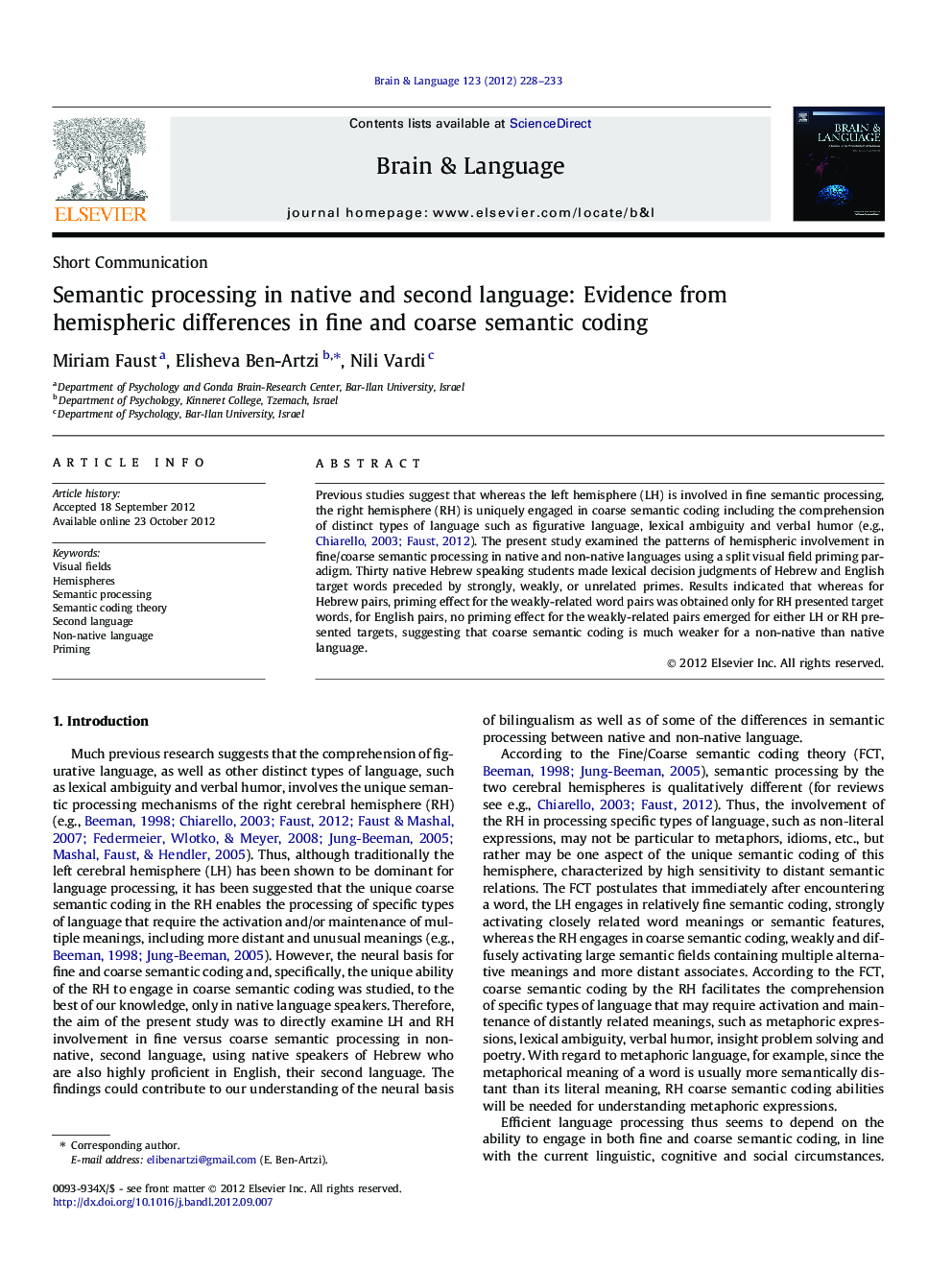| Article ID | Journal | Published Year | Pages | File Type |
|---|---|---|---|---|
| 925408 | Brain and Language | 2012 | 6 Pages |
Previous studies suggest that whereas the left hemisphere (LH) is involved in fine semantic processing, the right hemisphere (RH) is uniquely engaged in coarse semantic coding including the comprehension of distinct types of language such as figurative language, lexical ambiguity and verbal humor (e.g., Chiarello, 2003 and Faust, 2012). The present study examined the patterns of hemispheric involvement in fine/coarse semantic processing in native and non-native languages using a split visual field priming paradigm. Thirty native Hebrew speaking students made lexical decision judgments of Hebrew and English target words preceded by strongly, weakly, or unrelated primes. Results indicated that whereas for Hebrew pairs, priming effect for the weakly-related word pairs was obtained only for RH presented target words, for English pairs, no priming effect for the weakly-related pairs emerged for either LH or RH presented targets, suggesting that coarse semantic coding is much weaker for a non-native than native language.
► Patterns of hemispheric involvement in native and non-native languages were examined. ► Method included lexical decision judgments of Hebrew and English target words preceded by primes. ► For Hebrew, priming effect for the weakly-related word pairs was obtained only for right hemisphere. ► For English, no priming effect for the weakly-related pairs emerged for either hemisphere. ► Findings suggest that coarse semantic coding is much weaker for a non-native than native language.
